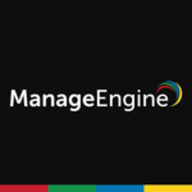

ManageEngine Applications Manager and Splunk Observability Cloud both compete in IT monitoring and management, with Splunk Observability Cloud considered superior due to its comprehensive features that justify its higher price point.
Features: ManageEngine Applications Manager offers monitoring for 80+ applications, end-user monitoring, and agentless mode monitoring. It provides a flexible deployment approach, allowing integration with other management solutions. Splunk Observability Cloud provides log analytics, customizable dashboards, and real-time monitoring. It excels in providing end-to-end visibility and advanced alerting features, enabling effective incident detection and resolution.
Room for Improvement: ManageEngine could improve by enhancing its application-specific monitoring and UI customization options. It might also focus on expanding its analytics capabilities. Splunk Observability Cloud could benefit from simplifying its deployment process, expanding its integration options with more third-party tools, and reducing its reliance on extensive training for optimal use.
Ease of Deployment and Customer Service: ManageEngine Applications Manager is known for its seamless deployment and effective customer support. Splunk Observability Cloud, while offering extensive setup resources, may pose challenges due to a more complex deployment process, yet provides comprehensive customer service and support once deployed.
Pricing and ROI: ManageEngine Applications Manager is recognized for delivering good ROI due to its cost-effective pricing. In contrast, Splunk Observability Cloud, though pricier, offers advanced capabilities that many users find justify the cost, especially where advanced data analytics and real-time insights are critical.
| Product | Market Share (%) |
|---|---|
| Splunk Observability Cloud | 2.0% |
| ManageEngine Applications Manager | 0.6% |
| Other | 97.4% |


| Company Size | Count |
|---|---|
| Small Business | 4 |
| Midsize Enterprise | 4 |
| Large Enterprise | 9 |
| Company Size | Count |
|---|---|
| Small Business | 20 |
| Midsize Enterprise | 10 |
| Large Enterprise | 43 |
ManageEngine Applications Manager is an application performance management (APM) solution that is designed to give users deep insights into both the way that their applications perform and the way that users of those applications experience them. Organizations can use this solution to identify areas where their critical applications are lacking and address them before there are any negative repercussions. ManageEngine Applications Manager is the kind of tool that companies of all sizes can use to keep their applications running in the best way possible.
ManageEngine Applications Manager Benefits
Some of the ways that organizations can benefit by deploying ManageEngine Applications Manager include:
ManageEngine Applications Manager Features
Some of the many useful features ManageEngine Applications Manager has to offer include:
Reviews from Real Users
ManageEngine Applications Manager is a solution that stands out when it is compared to many of its competitors. It is part of a complete suite of management tools that users can take advantage of. The way that ManageEngine Applications Manager keeps up to date with a regular schedule of software updates enables organizations to manage their applications without worrying that they are missing any important capabilities or features. If any feature is absent, users can integrate the solution with other monitoring solutions. ManageEngine Applications Manager regularly undergoes updates that ensure that users have access to all of the latest features and patches.
Rodrigo T., the CEO of AXIOVISTA spa, writes, “This solution is a part of a complete suite of management tools. So, it can be integrated with other solutions for monitoring networks, which is very important. You can expand it or interconnect it with many other tools, which is a powerful feature.”
Syed A., the enterprise senior account manager of sales at a tech services company, writes, “Our customers appreciate that ManageEngine sends regular updates, upgrading their software several times a year.”
Splunk Observability Cloud offers sophisticated log searching, data integration, and customizable dashboards. With rapid deployment and ease of use, this cloud service enhances monitoring capabilities across IT infrastructures for comprehensive end-to-end visibility.
Focused on enhancing performance management and security, Splunk Observability Cloud supports environments through its data visualization and analysis tools. Users appreciate its robust application performance monitoring and troubleshooting insights. However, improvements in integrations, interface customization, scalability, and automation are needed. Users find value in its capabilities for infrastructure and network monitoring, as well as log analytics, albeit cost considerations and better documentation are desired. Enhancements in real-time monitoring and network protection are also noted as areas for development.
What are the key features?In industries, Splunk Observability Cloud is implemented for security management by analyzing logs from detection systems, offering real-time alerts and troubleshooting for cloud-native applications. It is leveraged for machine data analysis, improving infrastructure visibility and supporting network and application performance management efforts.
We monitor all Application Performance Monitoring (APM) and Observability reviews to prevent fraudulent reviews and keep review quality high. We do not post reviews by company employees or direct competitors. We validate each review for authenticity via cross-reference with LinkedIn, and personal follow-up with the reviewer when necessary.